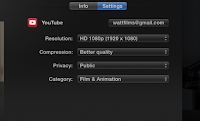Fox Searchlight Pictures was established in 1994, its an American film distribution company within the Fox Entertainment Group, a sister company of the larger 20th Century Fox. This is there company ident and this shows us that they helped with the making of the film Napoleon Dynamite.
This shot is very conventional as it is the company that also has helped to make the film. So now we have seen two different companies this hows us that they have been working together, this may be to spread risk and cost of the film. Paramount Pictures Corporation is a film studio, television production company and motion picture distributor, consistently ranked as one of the "Big Six" film studios of Hollywood. It is a subsidiary of U.S. media conglomerate Viacom. Source:Wikipedia
This film very much shows the following of convention as next we see who stars in the film ,but the way they have done the opening credits is very unorthodox as we see the credits within the world. Also the mise-en-scene is very natural as the tones are dark and con-notate old people which denotes that the film will be set earlier in time.
Here we see a tin foil ninja start this denotes that the film is low budget as there is no special effects used for titles which would suggest a low budget yet the film was made by 1 of the big six so this is an unusual mix of a low budget look but a large set of companies.
Again there is there is the use credits inside the world instead of over the top of a shot. Also the use of the chap stick makes us believe that this is an everyday film.
This is also very conventional as the last piece of the credits we see is the title of the film.
The TITLES were 2 minutes and 35 seconds long with 19 different titles which had different font and text position in each one all words tended to be the same size. Did not follow convention in many ways.there was a huge variety of colour with no animation or transitions just straight cuts.
This is the first shot of a film is conventionally a extreme long shot, this film meets this criteria. So overall this film has followed almost all convention even though it is an indie film. The mise-en-scene of this denotes that the film is about a introverted person as he is wearing the shame shade of color with very high trousers.
The sound was non diegetic as it was not within the world it's self. This music was indie in a way which signifyies the genre and was continuous though out the credits.
There was little shot variety but the mise-en-scene was extremely different so did not get boring.
There was no intertexuality and little to relate to. But we saw food which we may have seen to be a typical school lunch.
The mise-en-scene changed every shot but still had the same table cloth background also there were few props apart from different plates.
No characters were shown so we have no pro/antagonist. Also there were no binary opposites. There is also a straight cut to the beginning of the film with no known transitions.
There are no given inspirations for the film just that we get an idea it's about a young boy as it has what looks like school dinners.


































